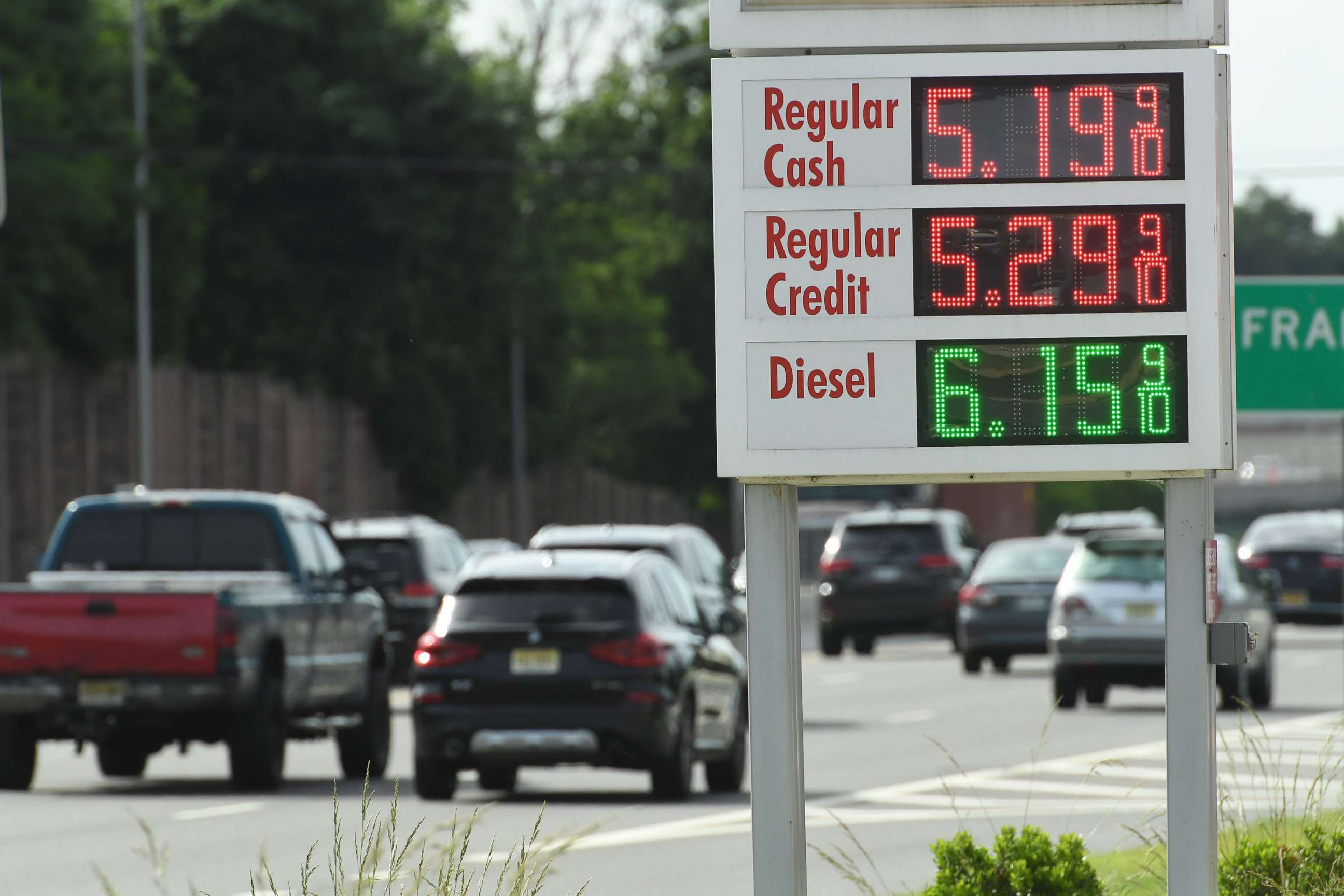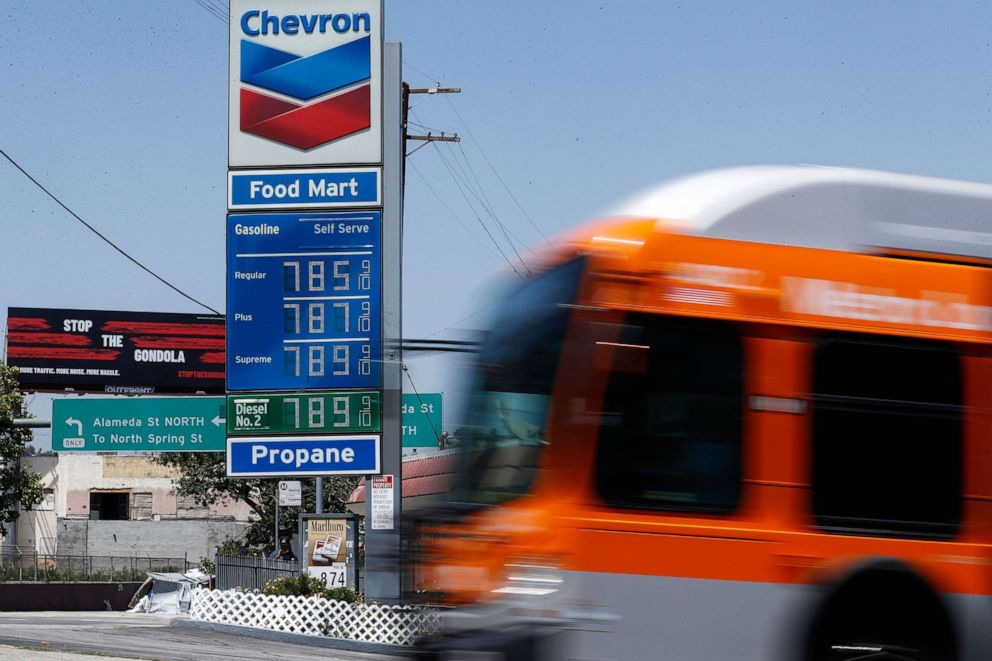How rising gas prices are impacting first responders
The average price of a gallon of gas nationwide reached $5 on Thursday.
As gas prices continue to rise, first responders are among those feeling the pain at the pump.
MedStar Mobile Healthcare, an emergency medical services system in Fort Worth, Texas, has seen its gas expenses increase dramatically. During the month of May last year, MedStar spent $96,547.94 on fuel; this past May, it spent $223,582.55, according to Matt Zavadsky, chief transformation officer for MedStar.
The response volume only marginally increased while the fuel costs rose, he said.
"It's a significant impact, on top of the other financial impacts adversely affecting EMS agencies," Zavadsky told ABC News. "For rural EMS agencies that travel great distances, and have more challenging finances, the impact could be even greater."

A travel boom that's increasing the demand for gas also comes amid a shortage of crude oil supply due to sanctions over the Russian invasion of Ukraine, driving up prices at the pump in recent months, experts told ABC News.
The average price of a gallon of gas nationwide reached $5 on Thursday, according to GasBuddy. As of Thursday, AAA had the average price of a gallon of gas just under $5 -- at $4.97, up from about $4.33 a month ago and $3.07 a year ago.
The increase has caused agencies like sheriff's offices and fire departments to closely monitor their fuel budget and issue new policy directives to limit gas mileage -- without impacting emergency response.
"Most sheriffs that I know will budget what their need is and maybe 10% more, but not 100% more," Matthew Saxton, CEO and executive director of the Michigan Sheriffs' Association, told ABC News.
This week, the Isabella County Sheriff's Office in central Michigan announced that it has "exhausted" its fuel funds, with several months to go before a budget reset. As a result, it said it will be managing what non-emergency calls it can over the phone.
"Deputies will continue to provide patrols to all areas of the county, they will respond to those calls that need to be managed in person. Any call that is in progress with active suspects will involve a response by the deputies," Sheriff Michael Main said in a Facebook post. "I want to assure the community that safety is our primary goal, and we will continue to respond to those types of calls."
County officials told Flint, Michigan, ABC affiliate WJRT they plan to address the budget concerns in the coming weeks.
"I know that once we meet, we're going to resolve this," Isabella County Commissioner Jerry Jaloszynski told the station.

As director of the Franklin County Emergency Management Agency, Ryan Buckingham said he issued a policy directive regarding non-emergency activities a couple of months ago when gas prices in the southern Illinois county were approaching $4 per gallon.
"I have a small budget to work with. I have to look out for that pretty quick," Buckingham told ABC News. "When it hits $5 a gallon, it gets even worse."
Buckingham said the agency has used up 76% of its fuel budget so far this fiscal year, which started Dec. 1, 2021.
"We're about 25% over the mark right now as far as where we should be budget-wise," he said, noting that the agency typically doesn't go over its allotted budget unless it's had to respond to something like a major disaster.
To help curtail fuel costs, Buckingham said the agency is looking to limit travel for meetings and training. For instance, instead of driving an hour away for specialty dive training, personnel may train in a local pool.
Emergency response will not be affected "no matter what," he said.
In rural Colorado, near Durango, Upper Pine River Fire Protection District Fire Chief Bruce Evans started noticing a "significant" increase in gas prices in January. In the last three months, fuel expenses have increased 36%, said Evans, cutting into the fuel budget.
"We've used 65% of that budget," said Evans. "We should have only used 45%."
The department has started exploring ways to reduce the number of vehicles that it has on the road outside an emergency response, including "no drive Friday," where personnel work from home if they can, Evans said. They may need to look to reallocate more funds to their fuel budget.
"We know we're going to have to put more money in, but we're also trying to be conservative," he said.
For EMS systems, the higher prices come as agencies have also increased wages to retain workers during the pandemic, Zavadsky said. Agencies will likely need to dip into their reserves or reallocate funds to cover the rising costs, he said.
Volunteer EMS personnel who use their personal vehicles to go to calls "may be less able to respond due to the high fuel prices," he said.
"Those double-whammy cost increases, without any real mechanism to generate more revenue, is crippling most EMS agencies," Zavadsky said.